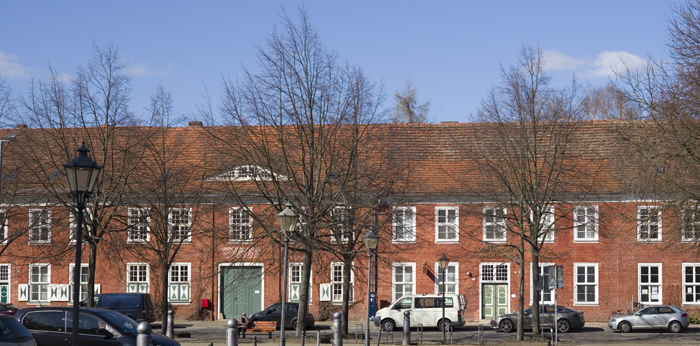
Why does Potsdam, 500 km (311 miles) away from the Netherlands, feature a Dutch Quarter?
For a number of reasons. Potsdam, surrounded by the river and lakes of the Havel, is built on swampy ground with a high groundwater table. Even today, it is technically-challenging building ground.
In 1732, the Prussian King, Frederick William I (1688–1740), known as the ‘Soldier King’, wanted to extend his city of residence, Potsdam, to the north. From two excursions to Holland, he was aware of the hydraulic engineering skills of the Dutch, who wrested their country from the sea.
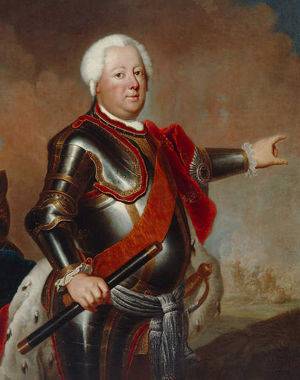
He was able to secure the services of the Dutch master builder Jan Bouman for the planning and execution of the city expansion, but also wanted to attract Dutch craftsmen for the benefit of the city.
To ensure that they didn’t feel too much like outsiders, Frederick William had four blocks with Dutch-style houses built from 1733 along with the city expansion. The craftsmen were to be encouraged to come to the March of Brandenburg with a right of abode in these houses and other privileges. Success, however, remained modest: in his lifetime, only four Dutch families moved into the newly-built quarter.
Following his death, the quarter’s two eastern blocks, including this house, were completed in the period up to 1742 under his son, Frederick II (the Great), with the richly-decorated houses on the west side of Bassinplatz and in Charlottenstraße being added later.
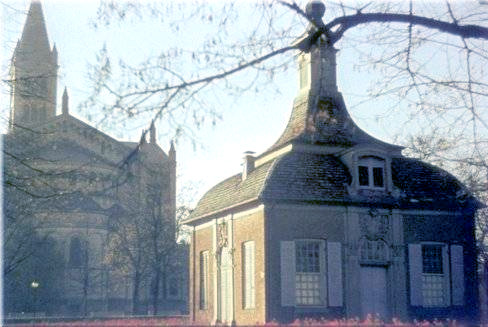
Bassinplatz, to the south of the quarter, originally featured a large pond into which the building site of the Dutch Quarter was drained. In the middle of the basin stood a pavilion, the Gloriette, on a small island. Over time, the basin silted up and was ultimately drained around 1870. The Gloriette survived all the wars but was destroyed by the Soviets in 1946 to be replaced by the monument which still stands there today.
The quarter consists of houses with different basic types among which the simple, triaxial buildings with the sweeping gables are the most striking.
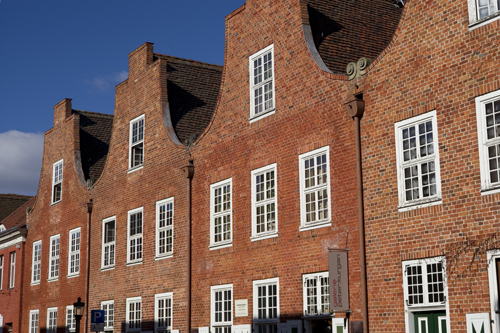
According to a Dutchman of my acquaintance, the fronts of the Dutch originals are narrower and more highly decorated than here in Potsdam. The oldest of the rows of houses in the quarter, the south side of Mittelstraße located between Friedrich-Ebert-Straße and Benkertstraße, shows a series of uniform gabled houses; only later did the facades along the streets become more varied.
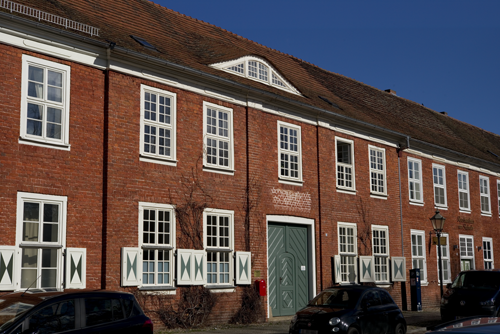
As preservation orders for secular buildings only became widespread after the turn of the century, many of the houses were altered in the 19th century: We find levelled gables, floors added, larger windows and different shutters, balconies, shop windows. Today, many of the facades have been painted over in a brick shade to conceal renovations carried out in bricks of a different colour. My house too was remoulded during the Wilhelmian era; this can be seen in the pictures below, and the door recalls it to this day. The rest of the facade was returned to an approximation of its original Baroque form during restoration work on the house around 1990 and given the look it has today.
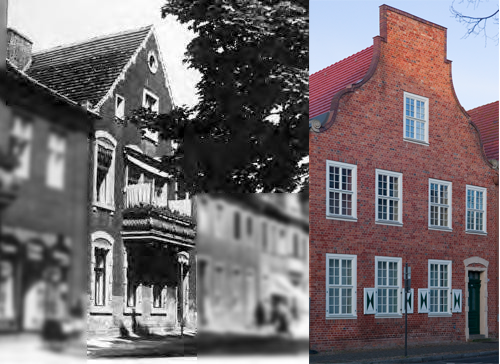
Six of the houses in the quarter were lost in the bombing of Potsdam by the Royal Air Force on the night of April 14, 1945 and as a result of slow decay during the days of the GDR. With the exception of two (Gutenbergstraße 69 and 81), they have all been rebuilt. The last house in this row is to emerge again soon on the empty site to the left of my house.
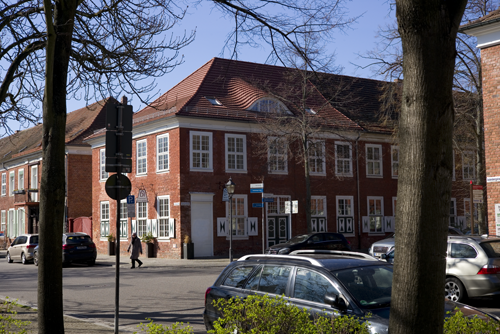
The Dutch Quarter features a lively mix of premises for living and working; there are many restaurants and cafés, shops, studios, workshops. It is a quarter with a high quality of life and, thanks to its central location, also a good starting point for your undertakings.
Text and photographs © 2021 Ernst Eimer. Reproduction not permitted.
Images (1), (2) and (3): public domain
Comments are now closed.